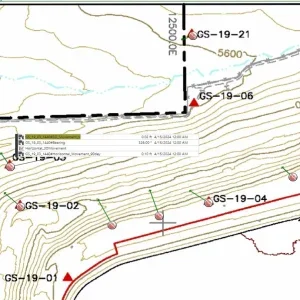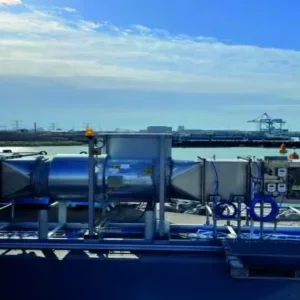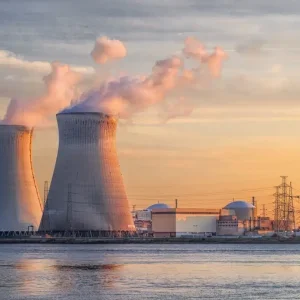Germany has about 310 dams that meet icold criteria, many dating from 100 years ago. There are also a number of small reservoirs which were built for mining purposes at the beginning of the 16th century in Saxony and Lower Saxony in the Harz mountains and in Erzgebirge.
The great days of dam building began at the end of the 19th century. Professor Intze (1843-1904), one of the founding professors of the Rhinish-Westphalian University of Technology in Aachen, was the most eager advocate of dam construction. Germany’s dams were intended to level the drain of water in the small rivers of Sauerland, Silesia, Saxony and Thuringia, creating an energy source for rapidly growing industrial areas as well as ensuring drinking water for regions with scarce water supplies, such as Ruhrgebiet.
The period between 1890 and 1920 saw the building of masonry dams. Their design can be traced back to Intze who supervised the construction of several dams. The gravity dam he invented consisted of crushed stones from quarries: a construction considered extraordinary at the time, with wall volumes up to 300,000m3 storage capacities up to 200M m3 or storage areas up to 12km2. During 1913-14 about 924,000m3 of stone masonry dams were finished in Germany. Some of these are still among the largest in central Europe.
At the end of the 1920s and the beginning of the 1930s, the first really large embankment dams were constructed, reaching heights of around 70m. After World War II, when most of the new dams in the western part of the country were built as embankment dams, former eastern Germany continued to build masonry and/or concrete dams. At this time, high water demands for industrial and private consumption prompted the need for further construction.
About one-fifth of the German population is supplied with drinking water from reservoirs, or reservoirs are needed to secure water supplies during dry periods – as is the case for the five million inhabitants of the Ruhrgebiet. Hydro power production plays quite a small role in the country’s power production mix (less than 5%) and there are no irrigation reservoirs.
Most reservoirs are used for flood control. The Bigge reservoir in North Rhine-Westphalia is used to lower the level of the Lenne river by 2m at Altena, and proves to be a valuable tool in protecting the town from flooding every year.
In the 1980s, dam construction more or less ceased in western Germany. A shift away from heavy industry to the provision of services, declining water demands and environmental considerations all played a part in this. Only a handful of projects were developed and built during this time, among them the drinking water reservoir Leibis/Lichte and the pumped storage scheme Goldisthal, both in Thuringia. Uprating and refurbishment, however, has a larger role in the industry.
Many of the country’s dams are now about 100 years old and have specific problems with valves and other appurtenant works. In many cases these parts must be replaced during full reservoir operation, which is costly and time consuming. Altogether the annual budget of all German dam owners for rehabilitation is estimated to be US$40-50M. Other problems have also emerged from stability analysis because many of the old masonry dams, designed at the time of Professor Intze, did not take uplift force into consideration. Bulletin 119 of ICOLD (Rehabilitation of Dams and Appurtenant Work) gives a broader overview of current rehabilitation work in Germany.
For the time being, hardly any new dam developments are taking place in Germany. There is no doubt that federal and state laws, such as the transformation of European guidelines on environmental checks during project planning and construction, as well as public opinion, will influence future projects. With such considerations in mind, the German National Committee of ICOLD believes the World Commission on Dams’ report has been written with the best of intentions, but from a technical point of view contains a lot of mistakes and inaccuracies, especially where benefits and concerns about existing dams are described. The report’s recommendations are not yet practicable and need to be amended by a reality check.
WATER SUPPLY FOR the Ruhr district in Germany is provided by abstracting water from the Ruhr river. The natural flow regime of the river, and losses from water export to adjacent river basins, means that demand can only be met by by the operation of reservoirs on tributaries of the Ruhr river. These store water during times of high river flow and discharge to guarantee minimum flow during drought periods.
The Ruhr Reservoirs Association was founded in 1899. It built and operated a system of reservoirs in the catchment of the Ruhr. In 1990 it united with the Ruhr River Association which is responsible for water quality management. The new association, called Ruhrverband, is now responsible for both water quality and quantity.
After a construction period of only five years, Möhne dam was put into operation in 1913. As the dam covers more than 25% of storage capacity along the river Ruhr, it plays a vital part in controlling the flow of water. Möhne became one of the most important sources of water supply in the Ruhr area, with hydro power production being viewed as a secondary benefit.
During World War II, on 17 May 1943, the Möhne dam was severely damaged by a bomb attack. The structure was damaged to a height of 23m over a length of 77m. A flood wave of about 110M m3 rose to a height of 6-7m, killing more than 1200 people and devastating the Möhne valley. The main power station was completely destroyed and a compensating reservoir below the dam was swept away.
Despite this devastation, the breach in the dam was closed the same year. Repair work on the power station and compensating reservoir began in 1950.
Bigge dam and reservoir
Bigge reservoir was constructed between 1957-65, although planning began in 1938 due to growing demands for drinking and industrial water supplies. The reservoir is situated between the cities of Attondorn and Olpe in the valley of the Bigge river – a tributary of the Lenne river which leads in to the Ruhr, upstream from the Hengstey impounding. Bigge’s reservoir storage capacity of 150M m3 increases the overall storage capacity of the system of reservoirs in the Ruhr catchment area from 323M m3 to 473M m3. During times of low natural flow, Bigge reservoir can contribute 40% of additional water to the Ruhr river system.
Flood control is another important function. From 1 November to 1 February, a flood storage of 32M m3 is available which can be refilled from 1 February to 1 May. Bigge power station is normally operated as a peak load plant with annual energy production at 22GWh.
Related Articles
Spotlight on … uprating and refurbishment






